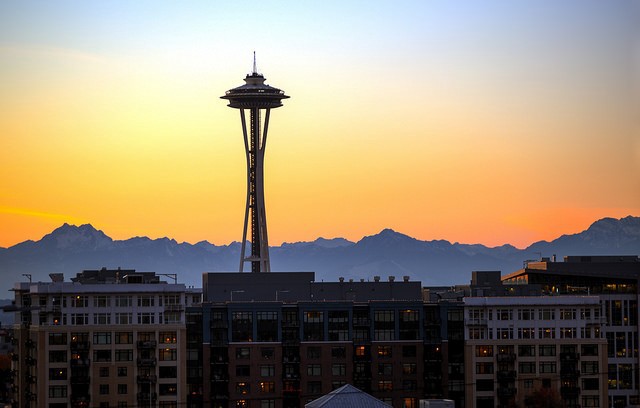Seattle’s Tent Cities Provide Structure to Homeless Residents

One of the more interesting subplots in our Billfold Book Club selection The Subprimes involves the creation and subsequent self-governance of a squatter city. When you don’t have anywhere else to live, you move into unused space, set up camp, and form your own community.
I did note that this book was realistic near-future fiction, and it is interesting to read it alongside a new article from Grist on Seattle’s tent cities.
Today, at the corner of 10th and Dearborn, a few hundred yards from the I-5 overpass, a cluster of tents and tiny houses painted flamingo pink huddle together against the Seattle chill, bright splotches of color under a dove-gray sky. The houses were built by Home Depot Foundation volunteers. The pink paint pays homage to the encampment’s original tents, which were donated by the Girl Scouts.
This is Nickelsville, a Seattle tent city that has been operating since 2008. The city and its residents find a place to set up camp, and live there until they are forced to relocate:
Seattle allows them to stay in their current location because they are sponsored by a faith organization — this time, it’s the Lutheran Church of the Good Shepherd — as well as permission from a private landowner. The permit should last until September, when, most likely, they’ll have to find another scrap of underutilized land and move on.
It is telling that Nickelsville has multiple sponsors and that various corporations are pulling for its success, and yet when its residents try to integrate into the rest of Seattle, the doors are closed. Grist describes one man who was convicted as a teenager on a drug possession charge. Now, over a decade later, that mark on his record still keeps him from finding housing. “He had money in the bank, but no landlord would take him.”
I wrote earlier this month that it seemed like I was seeing more people living on the street this year than I had seen last year, and it turns out my observation was correct; Grist cites data indicating that Seattle’s unsheltered homeless population has grown by 21 percent since 2014.
Grist also notes that Seattle recently passed an ordinance to build three more tent cities. As it turns out, when people are allowed to create their own stable living situations — by coming home to the same bed every night, instead of lining up for whatever is available at a shelter; by having a place to keep possessions; by living with families and near neighbors instead of a rotating cast of strangers — they also create more stable lives.
There’s something both uplifting and unnerving about the idea of letting people build their own tent and tiny-house communities. Uplifting, of course, because the last thing we want is for Seattle to shut these cities down or charge residents with crimes such as “sleeping outdoors.” But it’s also unnerving that the city is allowing tent cities to stand in for affordable rent, for landlords who won’t rent to people with decade-old drug charges, and for an economic system that should allow people who want to work and be a part of their community the chance to do so without simultaneously living in a tent.
So read the Grist piece today, if you get a chance. If you are interested in supporting Nickelsville, they accept donations via PayPal.
Photo credit: Tiffany Von Arnim
Support The Billfold
The Billfold continues to exist thanks to support from our readers. Help us continue to do our work by making a monthly pledge on Patreon or a one-time-only contribution through PayPal.
Comments